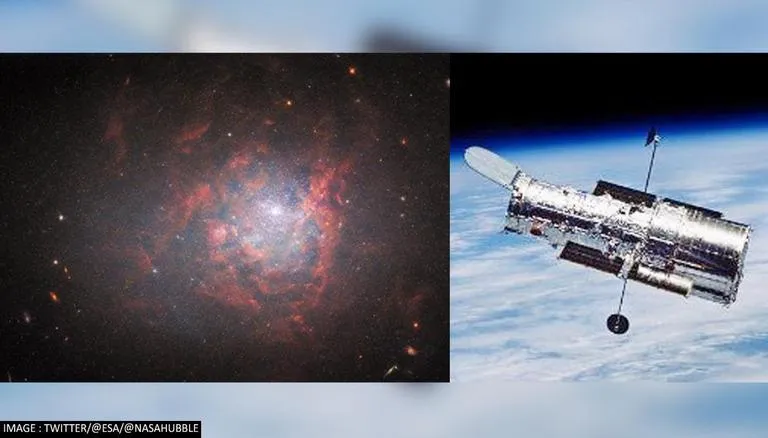The dwarf galaxy appears in a swirl of dazzling light and crimson colors in the new photograph.
The small, oddly shaped galaxy has been dubbed a “cosmic oddity” by the European Space Agency (ESA).
The ESA reported that the NGC 1705 recently went through a “starburst” phase, which means it was undergoing an unusually rapid star creation rate.
The dwarf galaxy is encircled by red cosmic “clouds” in the picture, accentuated by intense brightness.
New Clues on Universe Birth
According to the European Space Agency, NGC 1705 and other dwarf galaxies like it may give vital insights into the general development of galaxies.
As ESA said, the data presented in this picture are from a series of investigations aiming to reveal the interaction between stars, star clusters, and ionized gas in nearby star-forming galaxies.
New observations may offer a more comprehensive picture of the galaxy.
Furthermore, the space agency said that irregular dwarf galaxies, such as NGC 1705, contain fewer elements than bigger galaxies, mainly hydrogen and helium.
As a result, they are assumed to be akin to the universe’s very first galaxies.
Meanwhile, it is worth noting that Hubble is one of the most sophisticated telescopes available to scientists.
Notably, Hubble photographed NGC 1705 in 1999, when scientists used the telescope’s sensor, at the time, the Wide Field Planetary Camera 2, to examine the galaxy’s core.
Scientists now hope that the latest observations, which employ much newer Hubble equipment, may give more meaningful information and a more comprehensive view of the galaxy.
NASA, ESA, and the Canadian Space Agency (CSA) also launched the James Webb Space Telescope in December 2021, increasing infrared resolution and advanced sensitivity compared to Hubble, which is ultimately intended to replace it.












Leave a Reply